Last month, DC Comics announced a new series called Danger Street. The series, written by Tom King, with art by Jorge Fornes, and colors by Dave Stewart, centers around a host of mostly-forgotten DC characters. The characters of Danger Street are ripped right from the pages of DC Comics’ experimental series DC 1st Issue Special. I sat down to read the 13 issue run. Originally, I’d planned to write an article with a title along the lines of “I Read 1st Issue Special So You Don’t Have To.” By the time I was done with the series, however, I was convinced that everyone needs these characters in their lives.
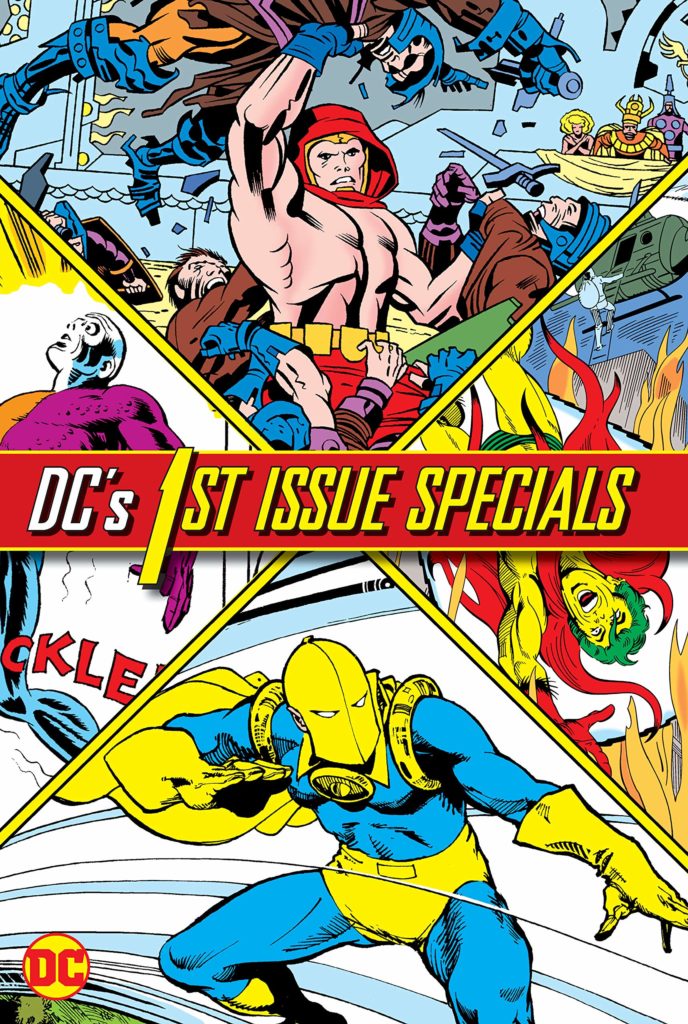
The Cast that Time Forgot
What’s a little odd about 1st Issue Special is that it seems like a failure of an experiment. Out of 13 issues, published from April 1975 to April 1976, only two went on to become full-fledged series. One of those series, Warlord, had been announced months before the titular character’s appearance in 1st Issue Special. The other was a revival of DC’s New Gods. But, despite the series’ many pleas for fans to send letters in if they wanted to know more about each story, it seems like this series was never meant to go places.
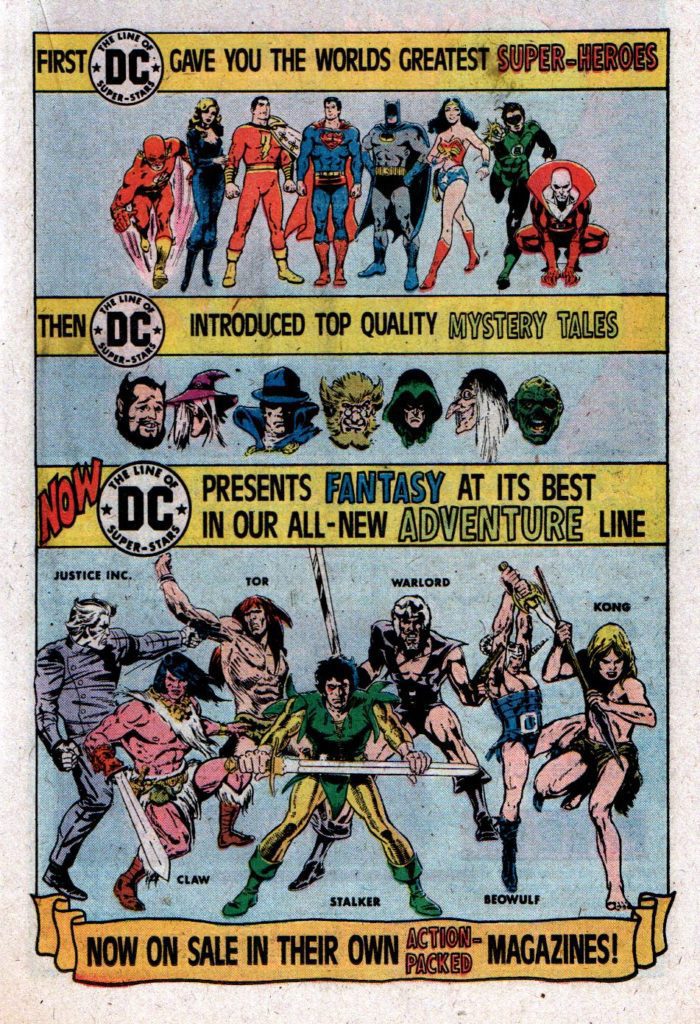
You see, 1st Issue Special was actually a rebranding of an old concept from DC. From the 1950s to the early 1970s, DC had a series called Showcase. (It popped back up again in 1977). Showcase would do exactly what its title suggests: It would present a character and see if readers were interested in knowing more. But where 1st Issue Special only produced one issue of a series, Showcase would produce three, bi-monthly. This would give the publisher time to see if there was real interest in the story, and to begin drafting ideas for where the series would lead if numbers were looking promising. If an issue of 1st Issue Special sold well, the average turnaround time for a new series in 1975 meant that any interest garnered by the debut would surely have died off by the time of publication.
In issue #71 of the magazine Back Issue!, Jack Abramowitz’s article “1st Issue Special – It Was No Showcase (But It Was Never Meant to Be)” quotes Gerry Conway as saying “In many cases, the concepts were created simply to fill the space of another issue for that month, not because we actually were trying to start a new series, although, obviously, we would have liked it if a new series had resulted. Mostly, it was just, ‘We have to come up with something for next month – here we are!'” (Page 40). And so 1st Issue Special was the product of spur of the moment premises and “filler” ideas. The characters, mostly never intended to go onto longer series, were relegated to being punchlines in issues of Ambush Bug and having two panel cameos in The All-New Atom. Needless to say, I was surprised to find comic book magic in these pages. Not only are some of these unpolished concepts fresh and full of life, but there are deeply interesting themes that run through the series as a whole.
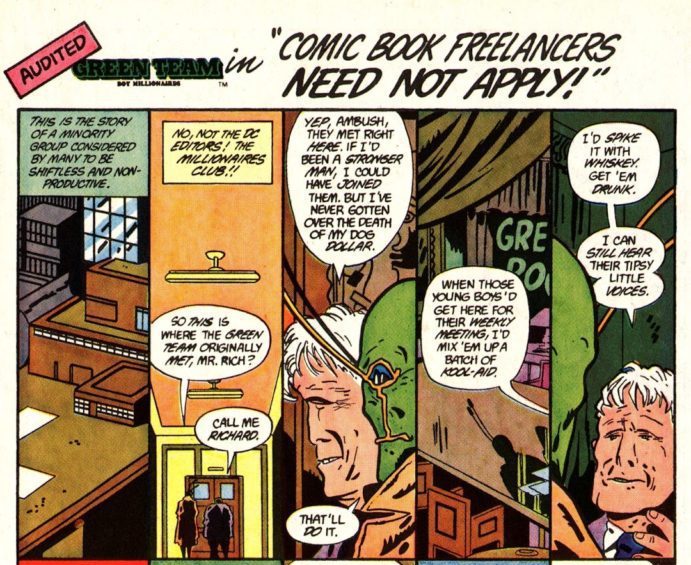
They’ll Never Let You Do That in a Comic!
The first thing you’ll notice about 1st Issue Special is the wildness of its concepts. Whether it’s the Dingbats of Danger Street or the Outsiders (no, not those Outsiders), this issue is full of strange characters. The second thing you’ll notice are the names on the credits page. Legends like Jack Kirby, Mike Grell, Gerry Conway, Joe Simon, Walt Simonson, and Steve Ditko brought these oddballs to life. Even a “throwaway” idea from these folks is worth its weight in gold. And these creators seem to find a freedom in not being too worried about whether these issues sold or not. The Outsiders in particular are joyfully strange.
In 1st Issue Special #10, writer Joe Simon, artist Jerry Grandenetti, and inker Creig Flessel, introduce us to this team comprised of a lizard boy, a deformed doctor whose face was reshaped by aliens, and a boy whose bottom half is a small truck, among others. There’s not much of an attempt to explore the psychological aspects of the Outsiders. There’s not even an explanation for how they can careen out of a hospital every night to fight crime without anyone catching on to where their headquarters is. No, the Outsiders are simply strange and that’s all that they’re supposed to be.
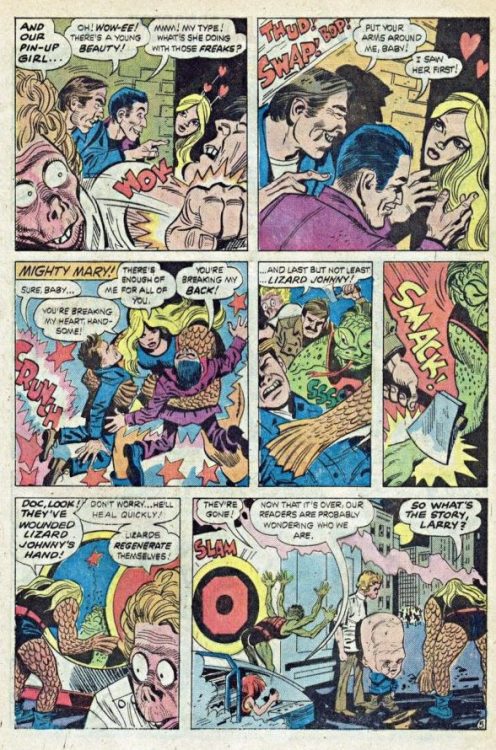
Much of 1st Issue Special also plumbs the depths of DC canon for pre-existing weirdos. The Creeper, Metamorpho, Dr. Fate, and Manhunter all make comebacks within these pages. Donned in bright colors and fighting larger-than-life villains, their issues remind readers of a more experimental time in DC’s history. But even in these issues, we see this series begin to grapple with the typical trappings of a comic book. It’s not enough to harken back to stranger days. No, 1st Issue Special is chock-full of one over-arching question:
“Why Do Comics Have to Be This Way?”
It starts most noticeably in 1st Issue Special #4, written by Robert Kanigher, with art by John Rosenberger and Vince Colletta. The issue follows the character known as “Lady Cop.” Despite the less-than-imaginative name, this issue is perhaps the most interesting in the series. It features Liza Warner, a young woman who witnesses the murder of her roommates while she hides under her bed. She only sees the murderer’s boots. Cursing herself for not doing something to stop him, she dedicates her life to pursuing justice and enrolls herself in the police academy.
The whole issue is based around the idea that she’s a woman, therefore she must be unfit to be a cop or a hero. But over and over again, Warner bests people who underestimate her. She headbutts crooks, flings men over her shoulder, and helps a girl who has just learned she may have an STD. Warner challenges the idea that she can’t be a hero because of her sex, while also using the casual misogyny of others to her advantage. She finds kindred spirits among others in her story who are also maligned or ignored. Just as Warner challenges the status quo of her environment, you can feel the creative team challenging the status quo of theirs.
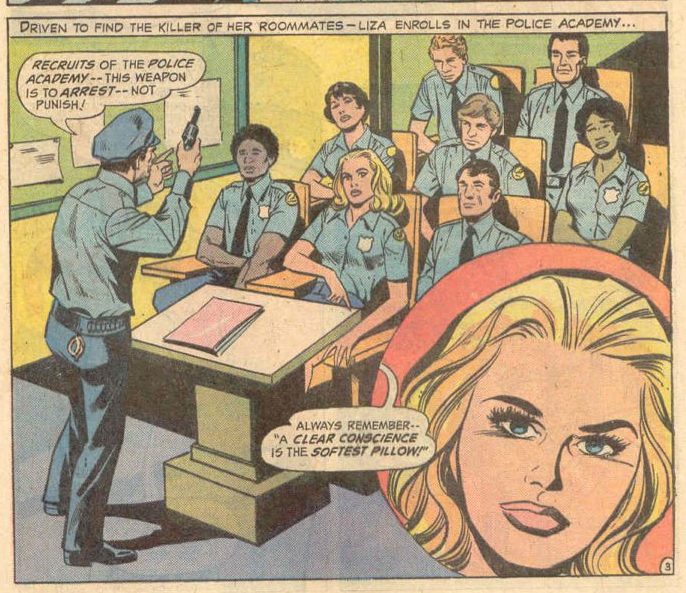
And they’re not alone in this. In Dr. Fate’s appearance, he interrupts a cliché of comics – the villain’s big monologue – by kicking the guy in the face. When the Creeper appears, it’s alongside Batman villain Firefly, whose Silver Age style duds give him the upper hand when no one will take him seriously. The Codename: Assassin story is heavy-laden with expository thought bubbles. But the issue later reveals that the main character has the power to read minds, and so even the heavy-handedness of the writing has a purpose in the story. A lot of 1st Issue Special is very tongue-in-cheek. Even some of the advertisements in the pages of these issues, one-page comics about Shazam and Batman saving the world with the help of Hostess Twinkies, speak of a time when people had learned to laugh at comic book clichés. 1st Issue Special is full of comic book creators grappling with the medium’s many tropes. In the spirit of Liza Warner, these creators use your assumptions of comic books to their advantage.
Same-Same but Different
In a similar vein, a lot of 1st Issue Special rehashes some old characters, but each with a new twist. Codename: Assassin is a man who lost his parents at a young age. When a loved one is violently murdered in front of him, he vows to have his vengeance on the criminals responsible. He’s not unlike Batman, or even the Punisher (who debuted a year before), except that he has telekinesis and telepathy on his side. The mix of the gritty mob scene the character is investigating, along with the fantastical nature of his powers makes for an odd yet delightful combination.
And though Starman shares a name with an existing DC character, it’s actually the Martian Manhunter that he most resembles. Even his name, Mikaal Tomas, rivals J’onn J’onnz at being perfect for a quick English translation. But where J’onn is noble and the only survivor of his home planet, Mikaal tells the other members of his race “I just hope you all burn in Hell.” This is not a man driven by the high ideals of Silver Age heroes.
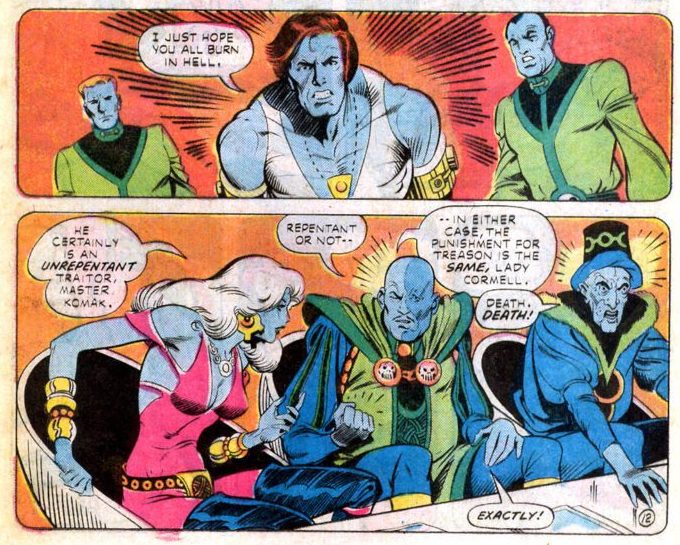
Mikaal arrives out of the sky in a damaged spaceship, looking like Ziggy Stardust. Despite the fact that they’ve seen him appear from space, a few thugs immediately arrive to try and mug him. Writer Gerry Conway and artists Mike Vosburg and Mike Royer are creating 1st Issue Special #12 thirty-eight years after Superman crash landed on earth. They’re showing us a world that has become used to the supernatural. The denizens of the DC Universe are no longer fazed by blue skin or shining amulets. This is just another Wednesday to them.
The Return of the New Gods – A Return to Form
If 1st Issue Special #1-12 is a type of experimentation, then issue #13 goes back to basics. With the return of the New Gods, we also see a return of the trappings of your everyday comic book. Where Liza Warner once stood, kicking sexual offenders in the shins, we now see Big Barda fighting in what amounts to a metal bikini. (Though Barda, twice the size of her husband and able to lift a tank, has always been a fantastic juxtaposition to your typical woman in comics). Where Codename: Assassin was surrounded by the thought bubbles of people he could hear telepathically, we now see Orion think out every step of his movement across each page, for no one’s benefit but his own.
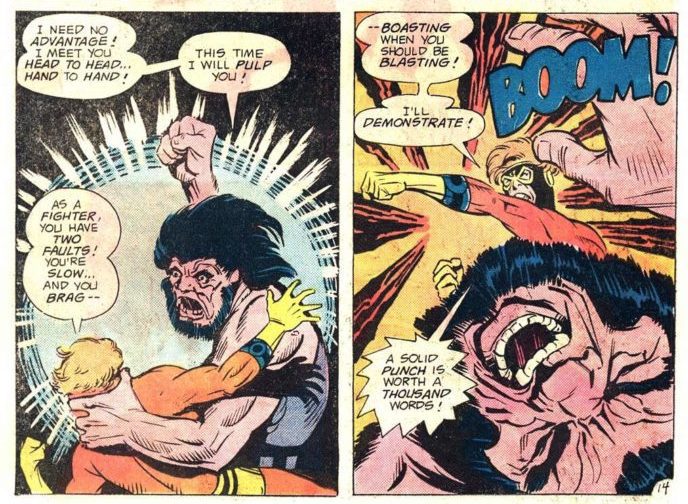
It’s tempting to call this finale disappointing. It abandons a lot of the themes that were experimented with for the “tried-and-true” approach. But the juxtaposition that this finale creates for the rest of the series actually makes the finale all the more charming. Sure, there’s not much to it beyond good old fashioned comic book fun. But what’s wrong with some good old fashioned comic book fun? In a way, 1st Issue Special is a journey through a strange land, and the finale brings you back home. The New Gods story went on to be picked up in Return of the New Gods #12, which lasted until issue #19 with some backup stories in Adventure Comics that closed out the series.
I Read 1st Issue Special, So Now You Should Too!
DC Comics’ 1st Issue Special, from 1975, is more than just a conglomeration of unique characters. It’s an experimentation with the medium of comics. Whether the series is throwing things up against the wall to see what ideas stick, commenting on the tropes and clichés of comics which we’d come to take for granted, or launching characters like Warlord who would be around for over 190 appearances, it’s all done in a fresh and interesting way. Without the actual burden of launching a series (despite what the editor’s notes will tell you) this series had the liberty to just have some fun. Not only should you be excited to see these characters pop back up on May 3rd in the pages of Danger Street #1, but you should check out where all of these wonderful personalities found their start.

